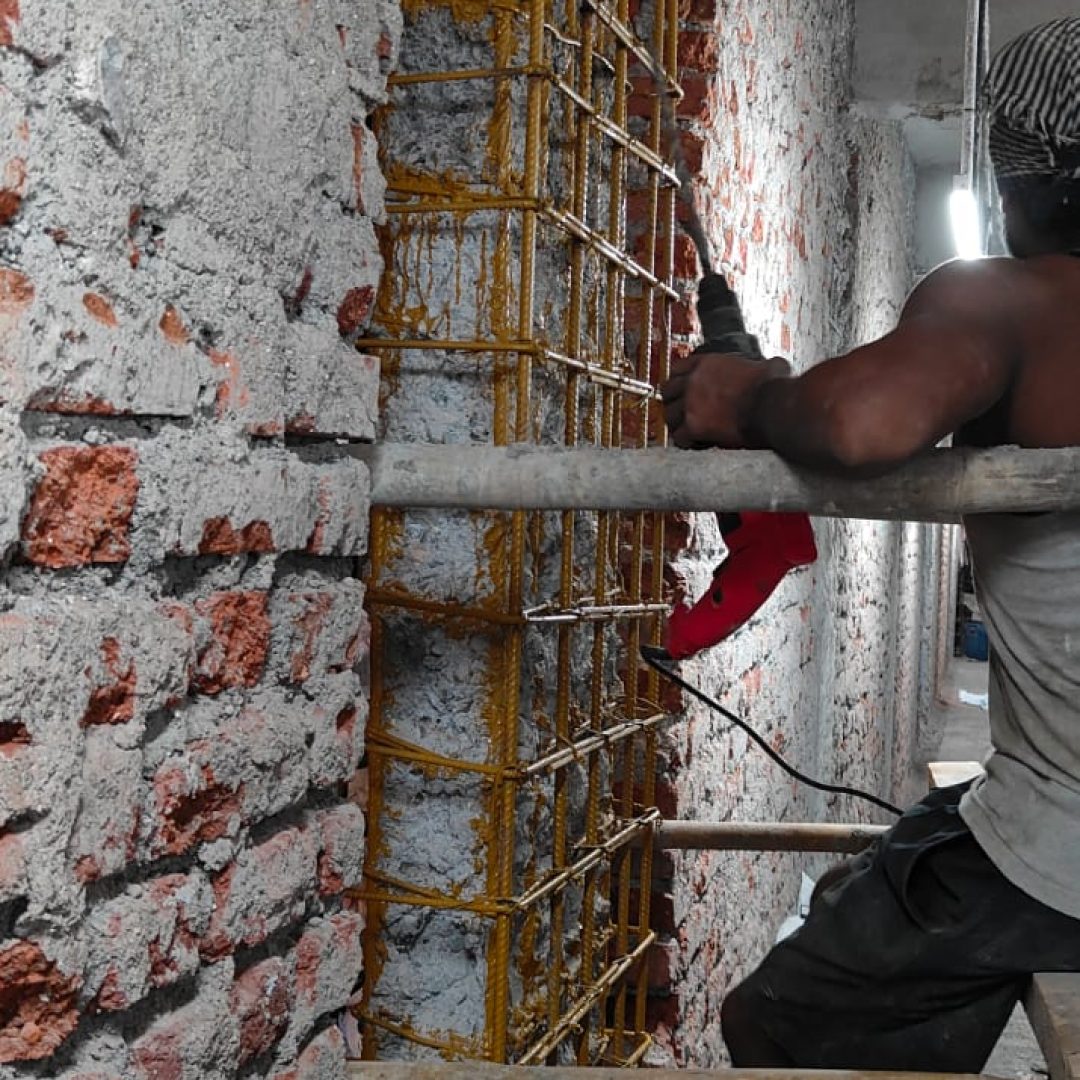What Is Retrofitting in Construction?
Retrofitting is the process of strengthening existing buildings to improve their performance, durability, and safety. It focuses on making old or weakened structures stronger without replacing them entirely.
Many buildings face issues such as cracks, corrosion, leaks, or weakened foundations over time. Retrofitting offers targeted solutions to restore safety and functionality.
Retrofitting is especially valuable for:
- Old residential and commercial buildings
- Structures exposed to harsh weather or environmental damage
- Buildings with poor-quality materials or outdated construction methods
- Properties in earthquake-prone or flood-prone regions
By reinforcing critical elements such as beams, columns, foundations, and walls, retrofitting ensures buildings remain safe and functional for decades. It also extends the life of structures, reducing the need for costly reconstruction.

When Do Buildings Need Retrofitting?
Buildings often show visible and hidden signs of distress that indicate the need for retrofitting. Some common situations include:
- Cracks in walls and slabs – Structural cracks suggest stress or weakening of materials.
- Water leakage and dampness – Moisture weakens concrete and steel, reducing strength.
- Corrosion of reinforcement – Rusted steel compromises the load-bearing capacity.
- Foundation settlement – Uneven settlement causes tilt or instability.
- Earthquake or disaster safety – Old buildings may not meet current seismic or fire safety codes.
- Change in building use – Adding extra floors, heavy equipment, or higher loads requires reinforcement.
Ignoring these issues risks safety and increases repair costs. Retrofitting at the right time ensures stability and prevents structural failure.
How Retrofitting Protects Buildings
Retrofitting improves both safety and performance. Key benefits include:
- Structural safety – Strengthens columns, beams, and foundations to carry loads safely.
- Disaster resilience – Provides earthquake resistance, fire safety, and protection against natural disasters.
- Prevention of collapse – Restores damaged elements, reducing chances of failure.
- Longer building life – Extends usability, avoiding demolition and reconstruction.
- Cost efficiency – More affordable than rebuilding entirely.
- Increased property value – A structurally safe building attracts higher value in resale or rental markets.
Retrofitting ensures peace of mind for owners, residents, and users by protecting lives and investments
Common Methods of Structural Retrofitting
Several techniques are used depending on the condition of the building:
- Jacketing of Columns & Beams – Adding concrete or steel layers to increase load capacity.
- Foundation Strengthening – Pile underpinning or grouting to improve foundation stability.
- FRP Wrapping – Fiber-reinforced polymers used to strengthen weak elements.
- Seismic Retrofitting – Reinforcements for earthquake safety.
- Waterproofing Solutions – Terrace and wall waterproofing to prevent moisture damage.
- Steel Bracing Systems – Additional steel frames to resist lateral forces.
Professional structural contractors analyse the building condition and recommend the most suitable method.
Choosing the Right Contractors for Retrofitting
Hiring experienced professionals is crucial for safe and effective retrofitting. Look for:
- Certified structural repair contractors with proven projects.
- Civil contractors offering end-to-end building repair and strengthening.
- Waterproofing contractors to handle dampness and leaks.
- Comprehensive service providers covering assessment, planning, and execution.
In cities like Bangalore and other urban hubs, property owners can find specialized construction companies for retrofitting, waterproofing, and renovation work.
Always verify a contractor’s past projects, client reviews, and compliance with safety codes before making a selection.
Conclusion
Retrofitting is a vital step in protecting buildings from age, damage, and disasters.
Timely retrofitting strengthens structures, prevents accidents, and extends life while being cost-effective. Property owners should treat it as an investment in safety and durability.
For long-term building stability, collaborate with professional structural repair contractors, civil construction companies, and waterproofing experts who provide reliable solutions tailored to your specific property needs.
Safe buildings mean safe lives. Retrofitting ensures both.

Great insights! Retrofitting is such an important step in extending the life and safety of old structures. It’s impressive how the right techniques can make buildings more resilient and sustainable.
– SMCS Chess Academy 🏆
Providing structured online chess training that builds strong foundations — just like retrofitting strengthens buildings! ♟️